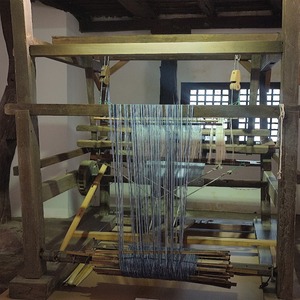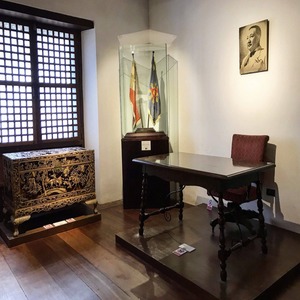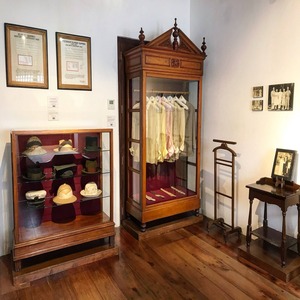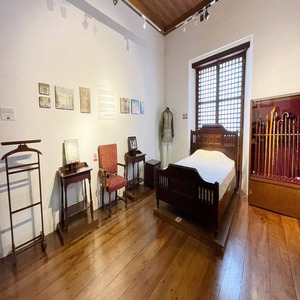| ‹ | President Elpidio Quirino Memorabilia |
› |
|---|
The gallery housing memorabilia of the Sixth President of the Republic, Elpidio Quirino (EQ), is located on the second floor of the Old Carcel Museum, the building where he was born on November 16, 1890 while his father served as jail warden.
Among the exhibited items are five paintings including two portraits of President Quirino and his wife Alicia Syquia that were done by National Artist Fernando Amorsolo, and a bust of the president done by National Artist for Sculpture Guillermo Tolentino. Also on display are some of EQ’s barong Tagalog, which showcase the country’s fine textile craft, and other pieces from his wardrobe. An intricately carved camphor wood chest given by Chinese General Chiang Kai Shek as a present to President Quirino, other wooden furniture, and an assortment of souvenirs moreover comprise the collection.
The EQ memorabilia are on loan from the President Elpidio Quirino Foundation.
The President Elpidio Quirino Memorabilia is a permanent exhibit in the National Museum Ilocos that showcases the personal belongings and memorabilia of the sixth President of the Philippines, Elpidio Quirino. The exhibit highlights the life and achievements of President Quirino, who was born in the Ilocos region.
The exhibit features a collection of personal belongings of President Quirino, including his furniture, clothes, and personal effects. It also includes a replica of his study room in the Malacañang Palace, where he spent many hours working and conducting official business.
The President Elpidio Quirino Memorabilia exhibit is known for its comprehensive presentation of the life and legacy of President Quirino, who was a key figure in Philippine history. It aims to promote the study and appreciation of his achievements and contributions to the country, including his efforts to rebuild the nation after World War II and promote social and economic progress.
Visitors to the exhibit can learn about the life and times of President Quirino, and appreciate his significant contributions to Philippine history and culture. The exhibit is a tribute to a great Filipino leader, and a testament to the enduring legacy of his achievements and contributions.




